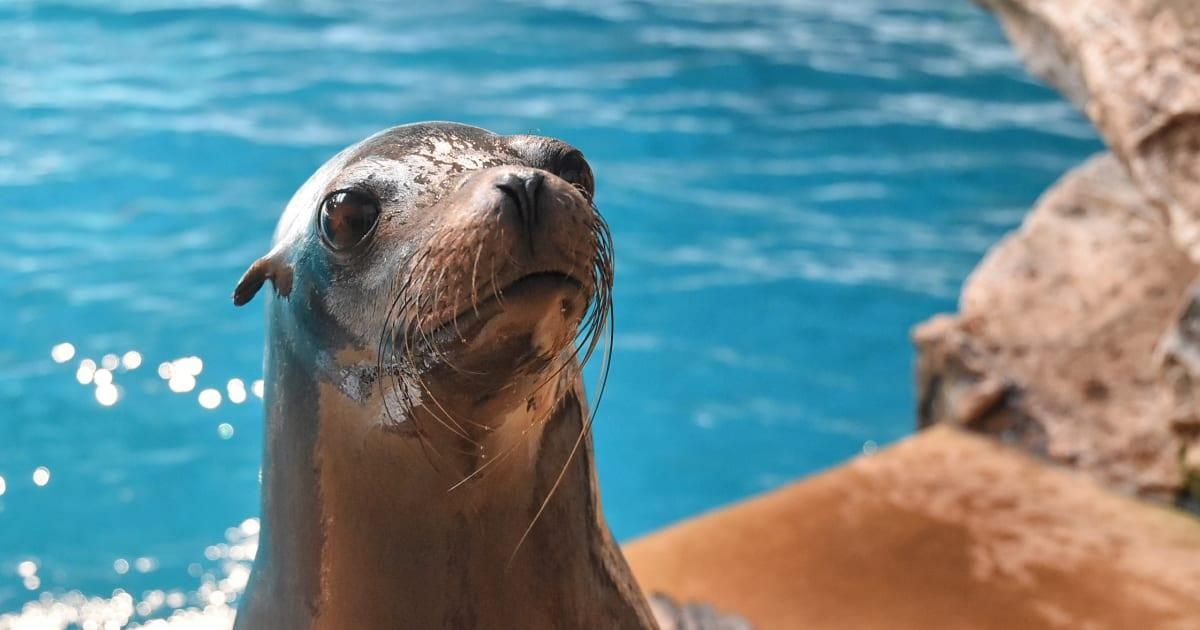Sick sea lions have been stranding themselves along the coast of California, raising alarms about a potential mass poisoning linked to a harmful bloom of algae. Since late July, officials from the Channel Islands Marine & Wildlife Institute have reported numerous cases of sick sea lions along the picturesque beaches of Santa Barbara and Ventura counties, situated northwest of Los Angeles.
The distressing phenomenon appears to be associated with domoic acid, a neurotoxin that poses serious health risks to marine mammals and humans alike. This toxic substance primarily impacts the brain and heart, leading to severe neurological damage. Regrettably, this season has seen an upsurge in the number of adult female California sea lions affected by this alarming situation, which has persisted throughout the summer.
As of early August, a rescue team comprising volunteer marine mammal specialists had managed to save 23 sea lions. Graphic images shared by the Coastal Vandenberg Space Force base highlight the efforts made to rehabilitate these distressed animals. Samuel Dover, the non-profit's co-founder and executive director, emphasized the enormity of the task at hand, illustrating the increased workload faced by their team during this challenging period: "On a typical day without domoic acid, we usually get around two to three calls. But when the toxins are present, we receive upwards of 100 calls daily. It's a clear sign of the growing problem, and while we've learned to manage our resources efficiently, it's far from an ideal situation."
The cause of this unfortunate event lies in the proliferation of microscopic algae that produce domoic acid. These algal blooms are typically exacerbated by factors such as rising ocean temperatures and nutrient overload. The process begins when small marine life, including shellfish and fish, consume the toxic algae, which then accumulates in their tissues. As larger animals like sea lions, dolphins, and birds consume these infected organisms, the neurotoxin works its way up the food chain.
Symptoms observed in affected sea lions include disorientation, unusual head movements, seizures, and excessive salivation. Fortunately, some animals can recover from the less severe forms of poisoning within a few days and return to the ocean unaided. However, those that suffer more intense effects require specialized care, which typically involves administering anti-seizure medications and providing a diet free from the harmful toxins.
Echoing the dire situation, many marine mammals have faced dire consequences in the past due to similar outbreaks. A particularly devastating incident in June of the previous year saw hundreds of sea lions and other marine creatures succumb to the effects of domoic acid toxicity. The burgeoning frequency and intensity of these poisonings have become a growing concern for marine scientists. Clarissa Anderson, the executive director of the Southern California Coastal Ocean Observing System, noted, "In my three decades of studying domoic acid, I can sense the worsening trend based on the data we've been tracking. We recorded the highest levels of this toxin in animal tissue last year, and the trend appears to be escalating." This alarming rise correlates with extensive research into climate change and its implications on marine ecosystems.
Monitoring the situation is critical. The Channel Islands Marine & Wildlife Institute has emphasized the importance of local response efforts, including the implementation of rescue and rehabilitation initiatives. These endeavors aim to mitigate the impact of these toxic blooms and support the welfare of affected wildlife.
While outbreaks of domoic acid poisoning are a natural occurrence along the California coastline, they are drawing heightened scrutiny as scientists investigate potential links to ongoing climate change. Experts aim to further understand the factors fueling these harmful algal blooms, including the conditions that give rise to nutrient overloads in coastal waters, as well as the significance of rising ocean temperatures in exacerbating these phenomena. Meanwhile, responsible monitoring of marine life and proactive response planning remain essential to address the crises that arise.




